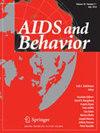Challenges and Opportunities with at-Home Blood Collection for HIV-1 Viral Load Monitoring among Sexual Minoritized Men who use Stimulants
Abstract
Sexually minoritized men (SMM) with HIV who use stimulants experience difficulties achieving and maintaining an undetectable viral load (VL). Home-based VL monitoring could augment HIV care by supporting interim, early identification of detectable VL. We describe implementation challenges associated with a home-collection device for laboratory-based VL testing among SMM with HIV who use stimulants. From March-May 2022, cisgender SMM with HIV reporting moderate-to-severe stimulant use disorder and suboptimal (< 90%) past-month antiretroviral therapy (ART) adherence were recruited via a consent-to-contact participant registry. Eligible men completed teleconference-based informed consent and were mailed a HemaSpot-HD blood collection device (volume capacity 160 µL; lower limit of detection 839 copies/mL) with detailed instructions for home blood self-collection and return shipment. Implementation process measures included estimated blood volume and VL quantification. Among 24 participants, 21 (88%) returned specimens with a median duration of 23 days (range: 10–71 days) between sending devices to participants and receiving specimens. Of these, 13/21 (62%) included enough blood (≥ 40 µL) for confidence in detectable/undetectable results; 10/13 (77%) had detectable VL, with 4/10 (40%) were quantifiable at ≥ 839 copies/mL. The remaining 8/21 had low blood volume (< 40 µL), but 3/8 (38%) still had detectable VL, with 1/3 (33%) quantifiable at ≥ 839 copies/mL. Home blood collection of ≥ 40 µL using HemaSpot-HD was feasible among this high-priority population, with > 50% having a VL detected. However, interim VL monitoring using HemaSpot-HD among those experiencing difficulties with ART adherence may be strengthened by building rapport via teleconferencing and providing detailed instructions to achieve adequate sample volume.


 求助内容:
求助内容: 应助结果提醒方式:
应助结果提醒方式:


